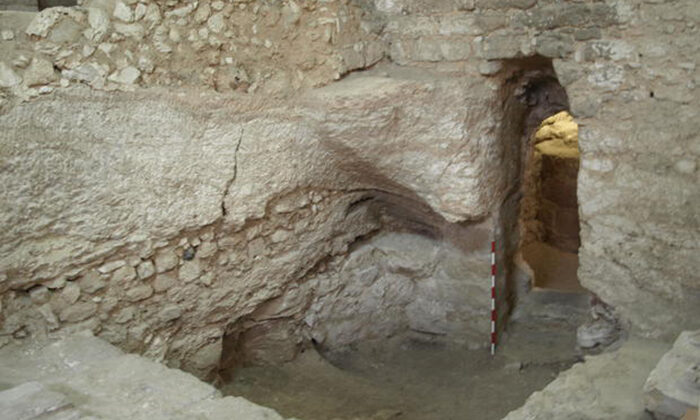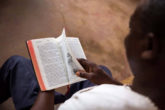
The entrance to a 1st-century home, located under the Sisters of Nazareth Convent in Nazareth, Israel, believed by archaeologist Professor Ken Dark to be the boyhood home of Jesus Christ. Photo: K.R. DARK.
The house in question, or what’s left of it, can be found underneath the Sisters of Nazareth convent in central Nazareth, Israel. It’s near the famous Church of the Annunciation, the spot where many Christians believe the angel Gabriel informed Mary that she would have a child.
The building has been dated to the first century AD and, according to Professor Ken Dark who has excavated at the site and spent the last 14 years studying the finds, it appears to be “a typical family home of its time and place.”
“There was nothing unusual about it. It’s not pitifully poor, but there’s no sign of any great wealth either. It’s very ordinary,” he told CBS News. “If this is the childhood environment of Jesus, there’s no reason to believe he grew up in anything other than a very typical Galilean rural home of its time.”
So, what are the clues?

One, says Dark, is the quality of construction. “Whoever built the house had a very good understanding of stone-working. That would be consistent with the sort of knowledge we would expect of someone who might be called a tekton,” the Ancient Greek word for craftsman that was used to refer to Joseph. “By itself, that’s not got flashing lights saying, ‘this is where Jesus lived.’ But it’s underneath a fifth to seventh century Byzantine church.”
Dark said that church is “almost certainly” the one described by a pilgrim in the 380s and known as the Church of the Nutrition [taken to mean the nurturing or upbringing of Christ]. The name stems from the idea that it was built over a crypt that contained the home of the young prophet.
The church was enormous, elaborately decorated, and probably the Byzantine cathedral of Nazareth. Its location and grandeur indicate to Dark that, “this particular place was considered really important.”
Dark notes, by comparison, that the Church of the Annunciation was built “over the place they believed the angel had told Mary she was going to have Jesus, [and] that is smaller than the Sisters of Nazareth church. Whatever’s there, whoever built the Sisters of Nazareth church believed it was a major thing, and something that was presumably considered close to or as important as the annunciation. That doesn’t leave that many options.”
Despite the possible significance of the site, it had received very little academic attention prior to the publication of Dark’s book, “The Sisters of Nazareth Convent: A Roman-period, Byzantine, and Crusader site in central Nazareth,” in September, 2020.
He said the site was largely ignored for years after being dismissed as insignificant by an influential archaeologist in the 20th century. When Dark first came to the location in 2006, he found records from earlier investigations that were never published.
“None of this stuff had been touched for generations. It was incredible to see how little attention there’s been,” he said.
The site was originally discovered in the 1880s, and over the following 50 years was excavated by the nuns of the convent themselves.
The project was initiated and directed by the superior of the convent, Mère Giraud, and is one of the first examples of an archaeological project directed by a woman. Her excavations predated, by around a century, the women commonly considered female pioneers in the field of archaeology today.
Despite the evidence in favor of his theory, Dark stressed that it was “by no means a conclusive case.”
“On the one hand, we can put forward a totally plausible case that this was Jesus’ childhood home. But on the other hand, actually proving that is beyond the scope of the evidence. It’s debatable whether it would ever be possible to prove that,” he said.
While the debate will undoubtedly go on, Dark is convinced that he’s onto something, and it’s more than guesswork.
“I’m an archaeologist. I’m not making up stories, I’m working off evidence,” he told CBS News. “What’s there on the ground is very consistent, very convincing.”
Reporting by CBS News.

